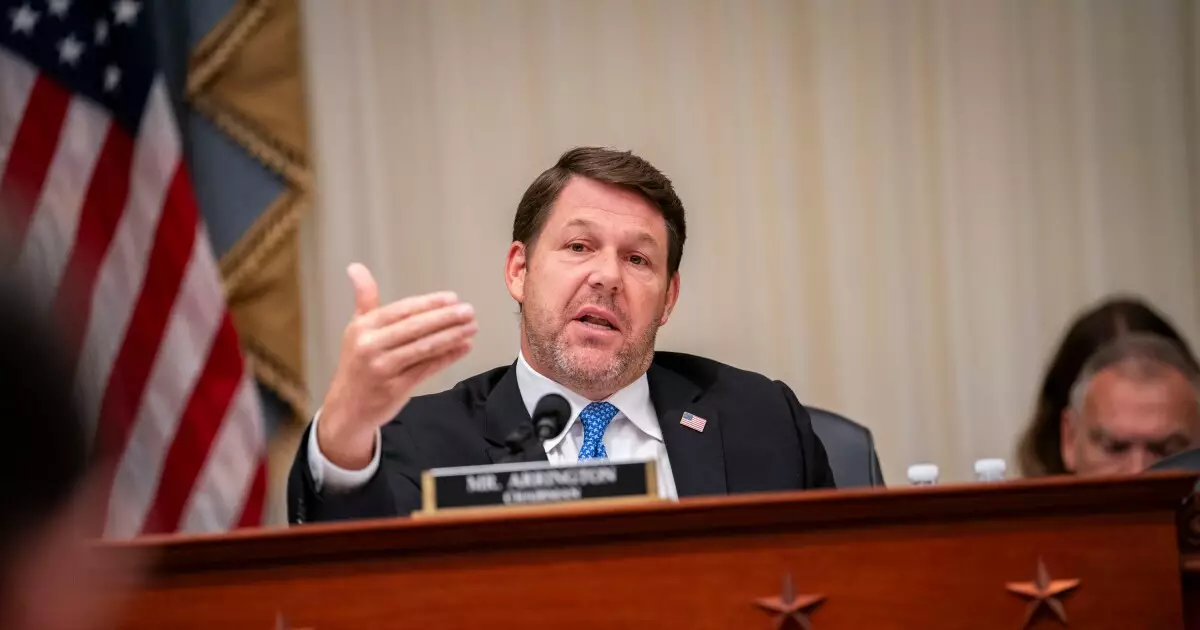The recent passage of a partisan budget resolution by the House Budget Committee represents a pivotal moment in American fiscal policy. As we analyze the implications of this decision, we must consider the broader context in which these budget discussions unfold, particularly the potential effects on the tax exemption status that is so vital to the municipal market. With a vote tally of 21-16 after an exhaustive 12-hour debate, this budget resolution showcases the challenges that House Republicans are facing in a divided government, where bipartisan cooperation often seems out of reach.
One notable aspect of the newly passed budget resolution is the allocation of $4.5 trillion aimed at tax cuts, primarily relating to extensions of the 2017 Tax Cuts and Jobs Act (TCJA). This initiative reflects an ongoing commitment by House Republicans to reinforce the previous administration’s tax policies. However, this resolution comes with intricate stipulations; if the Ways and Means Committee fails to identify $2 trillion in spending cuts, they are mandated to adjust the proposed tax cuts down by the same amount. This linking of spending and tax policy underscores the complexities of crafting a budget in a politically charged environment, where compromise is critical yet elusive.
The budget resolution also introduces flexibility for the Ways and Means Committee to expand tax cuts beyond the original $4.5 trillion should they successfully navigate cuts exceeding $2 trillion. The increased leverage may lead to more aggressive tax reduction strategies, potentially at the expense of needed public funding—a trade-off that is likely to ignite further debate both within Congress and among the American populace.
In addition to tax considerations, the resolution raises the debt limit by a staggering $4 trillion. This move is not merely a technical adjustment; it is crucial in averting a potentially catastrophic financial impasse as the summer’s “X date” approaches, signaling when the U.S. government could default on its debt obligations. The looming threat of default introduces an urgency into these fiscal negotiations, amplifying the stakes involved for all parties.
House Budget Chairman Jodey Arrington emphasized that the legislation represents a significant step towards achieving what he describes as “the most consequential pieces of legislation in modern history.” Here, he aligns the budget resolution with President Trump’s “America First” agenda, framing the fiscal strategy as a way to prioritize domestic economic interests at the potential expense of broader social programs.
One of the more intriguing elements of this budget resolution is its impact on the reconciliation process. Historically, once a budget resolution passes, lawmakers can expedite future legislation. As Rep. Kevin Hern pointed out, the process can unfold rapidly; citing previous instances, he noted that the TCJA-related policies moved from resolution to enactment in less than two months.
However, such speed may mask the deeper divisions within Congress, particularly when the House and Senate approach tax reform from disparate perspectives. While the House moves toward potentially permanent extensions of the TCJA, several Senate Republicans, including Majority Leader John Thune, desire a clear commitment to make these initiatives permanent rather than merely temporary. This discrepancy could serve as a significant roadblock during negotiations, further complicating the already contentious legislative landscape.
Although the aggressive stance on tax cuts and spending reform may appeal to a specific voter base, it raises broader questions about fiscal responsibility and the long-term implications for economic sustainability. With proposals estimating the full cost of extending TCJA provisions anywhere between $5 trillion and $11 trillion—when including additional policy priorities—the committee’s task to identify revenue-raisers becomes ever more daunting.
The landscape of American fiscal policy is intricately intertwined with politics, and as both parties gear up for what could be an intense negotiation period, it is essential for stakeholders to critically assess not only the immediate benefits of these resolutions but also their long-term impacts on economic stability and public welfare. In a time when bipartisan cooperation seems increasingly rare, navigating the path ahead will require not only political will but also a commitment to responsible governance. Ultimately, the success of these budgetary maneuvers will determine the future of tax reform and fiscal health in the United States.

